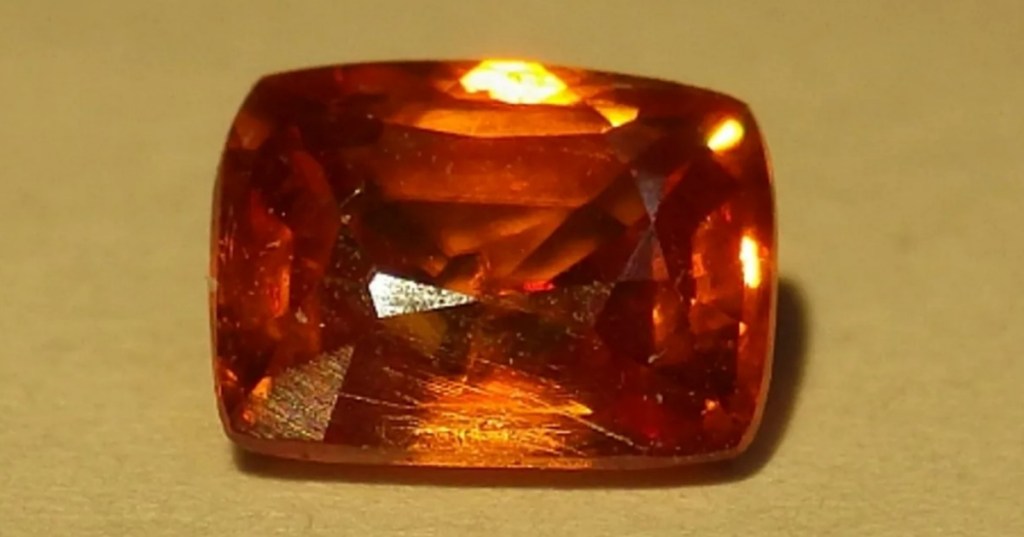Kyawthuite is the only mineral on Earth known from only one sample. The transparent reddish-orange stone, weighing 1.61 carats, was found near Mogok, Myanmar, and was recognized by the International Mineralogical Association in 2015. So, what do we know about this rarest of crystals?
Photo Credit: Natural History Museum of Los Angeles County
Kyawthuite’s chemical formula is Bi3+Sb5+O4, with traces of tantalum. Both bismuth (Bi) and antimony (Sb) are rare metals, but not especially so. You’ll find more bismuth than gold and more antimony than silver on the planet, and of course, oxygen is our most abundant element.
According to the mineral database at Caltech, kyawthuite is composed of checkerboard sheets of octahedra Sb5+O6 parallel to Bi3+ atoms. Sapphire hunters discovered the specimen, the only recognized bismuth-antimony oxide, in a stream bed. It is named after Dr. Kyaw Thu, a former geologist at Yangon University.
Myanmar is home to many gemstones, including painite, the second-rarest mineral with only a handful of samples recorded. According to Caltech Professor George Rossman, the large number of gemstones in Myanmar is due to the pressure and heat produced when India collided with Asia. Unfortunately, long-standing wars and international sanctions make it unlikely that all discoveries are scientifically studied.
Photo Credit: Science Springs
If you’re a rare gemstone connoisseur, you’ll be happy to know that a synthetic replica of kyawthuite exists. There’s no need to steal the only sample on Earth from its home at the Natural History Museum of Los Angeles County.
